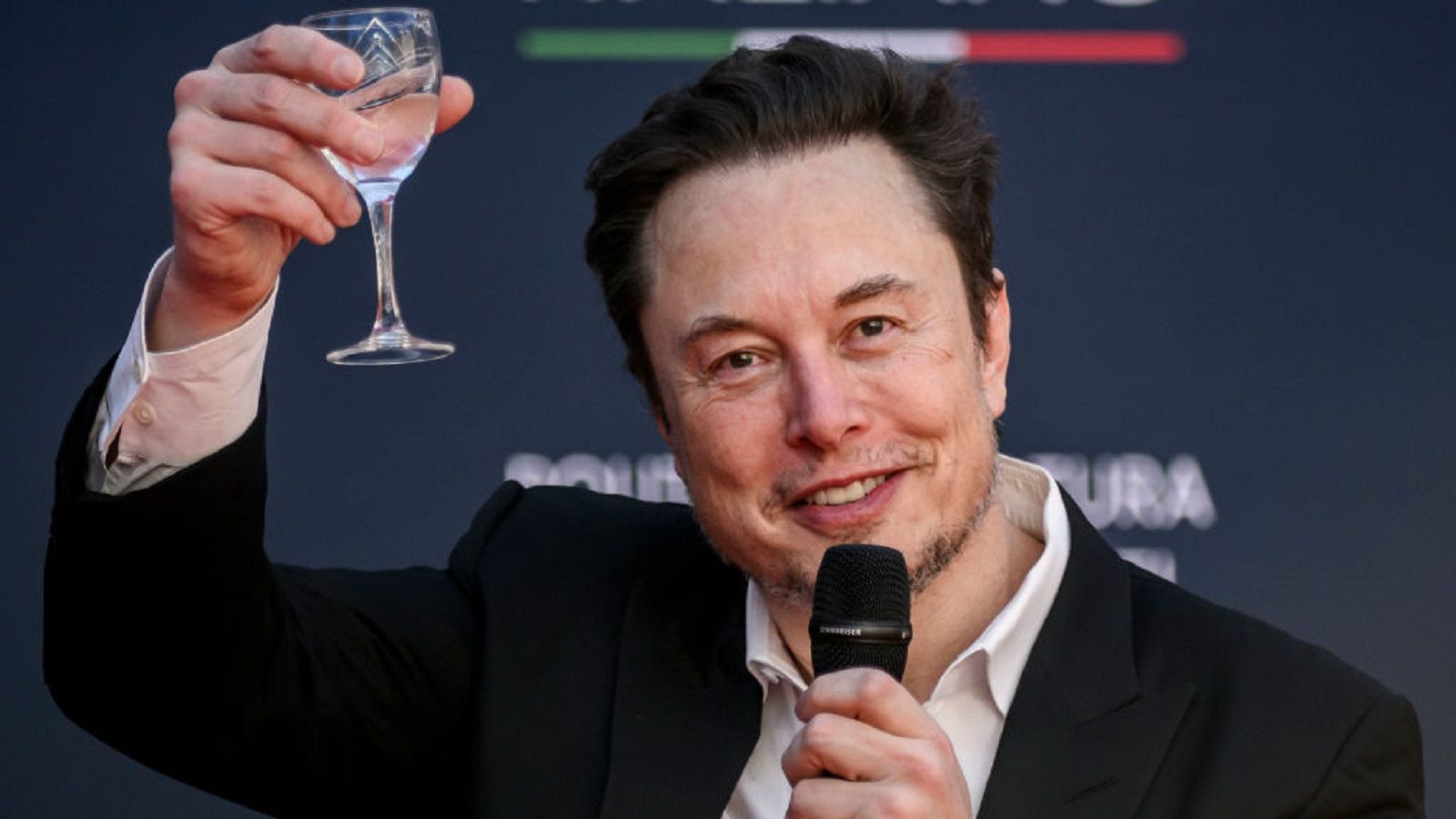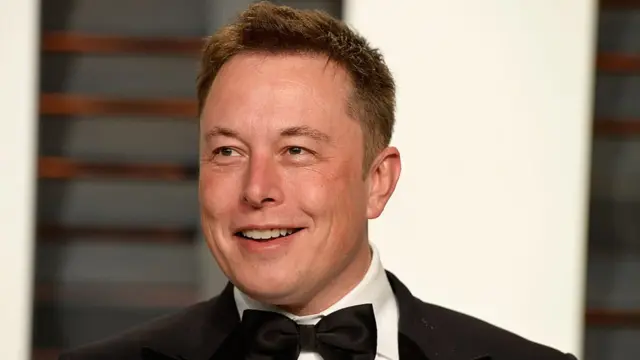ELECTRIC EXTRAORDINARY: Tesla Approves Elon Musk’s $1 Trillion Pay Deal – News
hong47-9 minutes 12/11/2025
In a move likely to rewrite the playbook for executive compensation, Tesla shareholders have approved a compensation package for Elon Musk that could reach$1 trillion in value—if the company hits a series of ambitious milestones over the coming decade. This isnot a guaranteed payout of $1 trillion today—but a conditional, equity‑based award tied to performance. The decision raises profound questions about governance, incentives, corporate culture and the evolution of Tesla’s business model.

This article examines how the deal was structured, what Tesla and Musk are committing to, why shareholders approved it despite push‑back, and what the risks and implications are for Tesla, its investors and the broader market.
The Vote: What Happened
OnNovember 6, 2025, at Tesla’s annual meeting held in Austin, Texas, shareholders voted on the compensation plan for Musk. The proposal passed withover 75% support of shares voted. Although some major institutional investors opposed the package (for example, the Norwegian sovereign wealth fund publicly announced plans to vote against it).

I super appreciate it,” Musk said, responding to the vote outcome.
Thus, the board secured the approval needed to move forward. But the headline figure of “$1 trillion” deserves unpacking.

The Deal Structure: How the $1 Trillion Number Arises
The package is entirely equity‑based (no cash salary). Musk’s reward will come in multiple tranches (12 distinct blocks) contingent upon Tesla achieving operational, financial and market valuation goals over a roughly decade‑long timeframe.
Key points:

The gross headline value sits around $1 trillion if all tranches are fulfilled.
After accounting for the value of the shares at the time the plan was approved (early September) and other deductibles, the “net” potential value is often cited around $878 billion.

Musk’s share stake in Tesla potentially rising from roughly 15% to as high as 25% (or more) if all conditions are met.
In short: many things must go right for Musk to realize the full payout. If Tesla misses big, Musk may receive far less. Some analysts call this akin to a “moon‑shot” bonus.

Why the Board & Shareholders Approved It
Retention of Musk
Tesla’s board has long maintained that Musk is central to its vision. Reports said the board warned that Musk could depart if the compensation package was rejected. Investors who believe Tesla’s future rests on Musk’s leadership thus felt compelled to agree.
The structure ostensibly aligns Musk’s compensation with shareholders’ upside: if Tesla grows enormously and hits the targets, Musk is rewarded—shareholders benefit by value creation. Some investors accepted this logic.
Musk and Tesla pitched the deal as enabling the company to transition from EV manufacturer into a full‑spectrum technology/robotics business: e.g., robot‑taxis, humanoid robots, AI chips. The pay package was framed as necessary to fund that transformation and keep Musk committed.
Governance Move Under Texas Law
Interestingly, Tesla re‑incorporated in Texas (moving from Delaware) earlier in 2024. Under Texas law Musk was allowed to vote his own shares in favour of the compensation package—meaning his ~15% stake could directly support the vote.

Despite the strong vote, the package faced substantial push‑back:
The Norwegian sovereign wealth fund (with a ~1.1% Tesla stake) opposed the deal citing concerns of size, dilution, and key‑person risk. Proxy advisory firms such as ISS and Glass Lewis recommended voting against the package based on corporate‐governance standards.
Critics argued that the $1 trillion headline figure is >misleading: it assumes all targets are met, many of which are extremely ambitious. Some see it as over‑rewarding executive compensation.

Concerns about dilution for existing shareholders (since Musk would gain tens or hundreds of millions of shares if targets are met).
Historical precedent shows that Tesla’s previous 2018 pay deal (worth $55 billion) was struck down in Delaware courts on governance grounds.
Thus, while approved, the deal triggered a broader debate about corporate governance, executive pay escalation and shareholder voice.
Transforming Tesla’s Business Model
The package signals clearly that Tesla sees itself as more than an electric‑vehicle maker. Tesla is betting big on robotics, AI, robot‑axis, humanoid robots (Optimus), not just cars. If Musk delivers, Tesla could emerge as a tech/AI powerhouse. But the stakes are huge.
For Shareholders & Valuation
From a valuation standpoint, Tesla’s market cap of ~$1.5 trillion at the time of vote must grow ~5‑6x to hit the $8.5 trillion target. That implies aggressive growth over the next decade in a highly competitive space (EVs, AI, robotics). If Tesla falls short, shareholders might bear the cost (dilution, missed growth) while Musk earns less.

For Executive Pay Norms
This is arguably the largest executive pay package ever proposed/approved in corporate history. It raises the bar for what large‑cap CEOs might demand, and how boards frame compensation. If Musk gets paid $1 trillion (or even a significant fraction), it could reset the ceiling for executive reward globally.
For Governance & Risk
The deal raises key questions: How much control does Musk (and one individual) hold? Are the governance safeguards sufficient? Will the board act independently? The leverage given to Musk is immense. Shareholders and governance watchdogs will be watching closely.
The Road Ahead: Key Metrics & Risks
Key Milestones to Watch
Vehicle deliveries reaching ~20 million annually (Tesla’s 2024 deliveries were ~2.5 million)
Market cap scaling to ~$8.5 trillion
Deployment of ~1 million robot‑taxis
Delivery of ~1 million Optimus humanoid robots
Sustained profitability and cash‑flow growth

Tesla outcome gap: Failing to hit milestones will reduce Musk’s payout—but may also dent shareholder returns.
Execution risk: Robot‑taxis, humanoids, full self‑driving are unproven at scale.
Competitive risk: Chinese EV manufacturers, rivals in robotics and AI may outpace Tesla.
Governance and legal risk: Lawsuits challenging compensation or rollback risk if targets not credible.
Dilution: If many shares are issued to Musk, other shareholders may see value diluted.
Conclusion
Tesla’s approval of Elon Musk’s $1 trillion compensation package marks a watershed moment. It reflects a bold, even audacious vision: Musk will stake his fortunes (and Tesla’s future) on reshaping an automaker into a global robotics/AI powerhouse. With a 75%‑plus shareholder vote, the board and investors have placed a big bet on Musk’s leadership, even as concerns about governance, dilution and feasibility loom large

